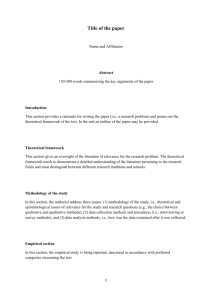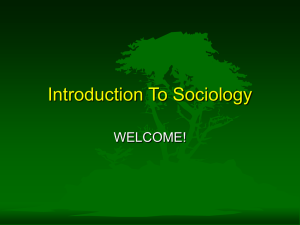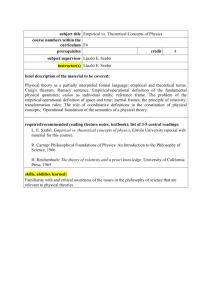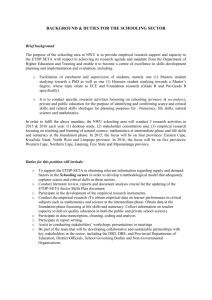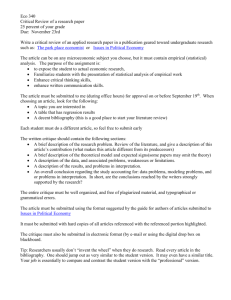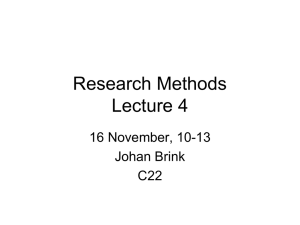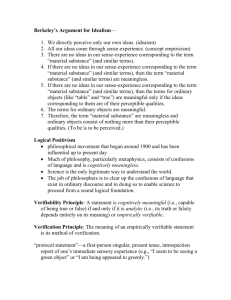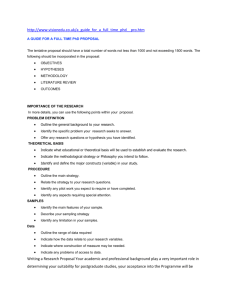Human Capital, the Structure of Production, and Growth
advertisement
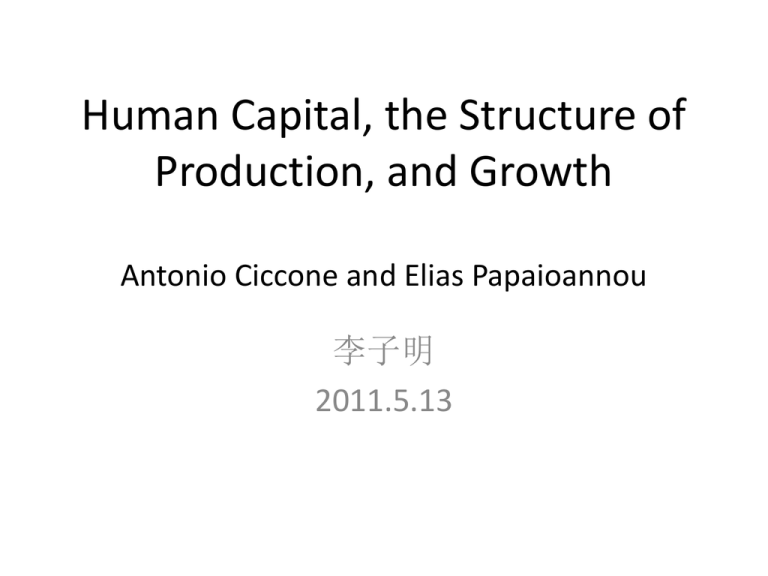
Human Capital, the Structure of Production, and Growth Antonio Ciccone and Elias Papaioannou 李子明 2011.5.13 I. Introduction • Problem: Countries with higher initial education levels value-added and employment growth in schooling-intensive industries (1980-1990s) – Assumption: Schooling adoption of new and skilledlabor augmenting technology – Theoretical framework: (1)Technology adoption function from N-P (2)International specification – Main concern:(1)Human-capital-level effect (2)Openness of international trade – Empirical model • Weakness of former empirical study – Difficulties when specifying cross-country growth regression limit sample on countries’ specification – Mismeasured schooling data magnified bias by multicollinearity • Wayout: – channel between HC and growth--- technology adoption – skilled-labor-argumenting technology(高技术劳 动扩张型技术) II. Theoretical model • Assumption: Industry: s=0(Low HC),1(High HC) HC in country c at time t:Mc,t Lc,t Labor type: f=L,M Technology adoption: H=M/L Efficiency level: II. Theoretical model • Efficiency growth from N-P: (1) • Implication: if world constant efficinecy growth • steady state : II. Theoretical model • Steady state Output: Assuming: full employment in competitive labor market II. Theoretical model • 稳态时高技术与低技术产业的相对产出: • • 相对产出的国家间比较: FSE(factor supply effect) TAE(technology adoption effect) Implication of (3) • FSE v.s TAE: Skilled-or unskilled-labor-augmenting technology Assume: (1) : so HC XC Z Skilled (+) 2/3<3/4 (2) : so HC XC Z Unskilled (-)3/2>4/3 z H M / L ( L L M M g g ) Implication of (3) • cross-country comparison: if Hc>Hq, skilled-labor-augment • (3)(4) • Output: • Country-specific effect • industry-specific effect L • η:(= a c )unskilled labor –augmenting technological change • g(hc,t)s: (g(hc,t)= a - a ) impact of initial HC M c L c Remark 1 • assumption on time-constant HC : – If HC increase in time, the supply of HC and the differential output between high and low HC industries would increase through labor movement Low HC intensive industry High HC intensive industry Remark 2 • single industry pairs in a neoclassical multiindustry model • monopolistic competition and transport cost • Alternative theoretical framework: 不依赖人力资本水平,只要人力资本的供 给量高,人力资本密集型产业的全要素生 产就多 III. Data • Country-Industry: – value-added and employment data of 28 industries in countries • Industry level: table I of American data • Country level: – benchmark measure of HC – standard source of per capital GDP, capital-output ratio, trade openness, rule of law indicator, property rights institutions IV Empirical model-main result • 1. Initial Education Level and Industry Growth • Table 2 Benchmark estimation IV Empirical model-main result • 2. Improvements in Schooling and Industry Growth(Table 3 (1)-(4)) • 3 Openness(Table 3 (5)-(8)) IV Empirical model---Further Evidence and Sensitivity Analysis • • • • Human Capital-Other Industry Characterisitics(T4)(E(6)) Country Characteristics(T5)(E(7)) Alternative Measures of Human Capital(T6) Alternative Sample Periods(T7) VI. Conclusion • 研究人力资本对经济增长的影响,需要考 察人力资本如何在技术运用发挥作用 • 教育水平较高的国家将更快的掌握skilledlabor-augumenting technology • 学校教育密集性产业在教育水平较高的国 家增长的更快,因此该国产业更可能向教 育密集型产业升级 • 在开放经济下,初始教育水平的对经济增 长和产业结果的作用更突出

